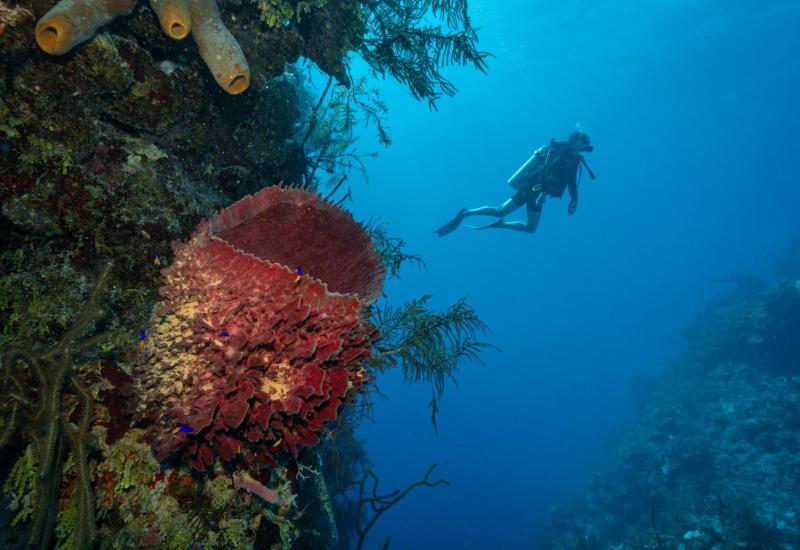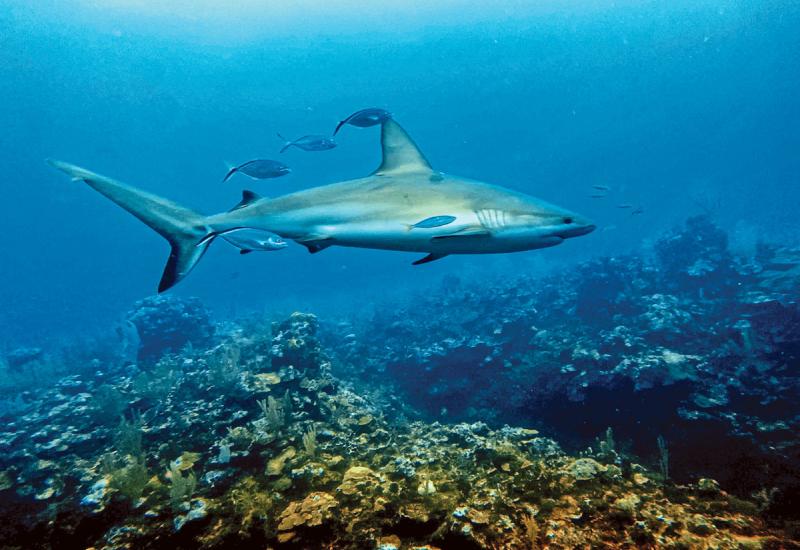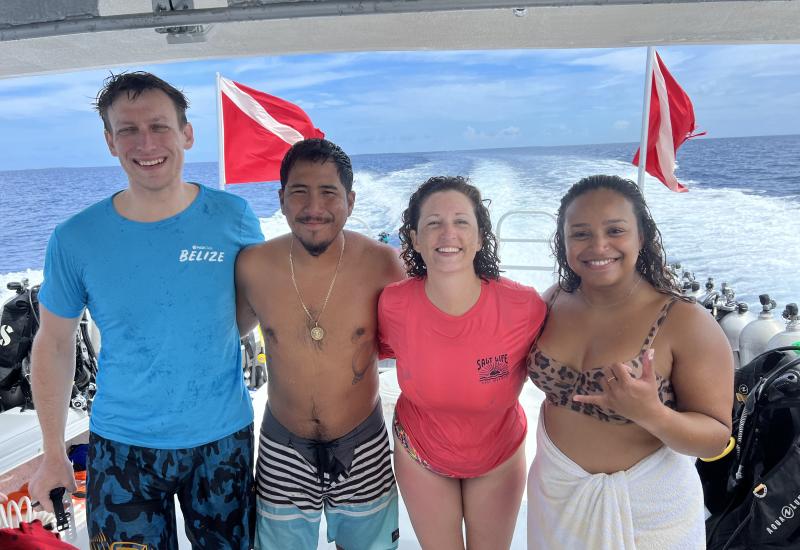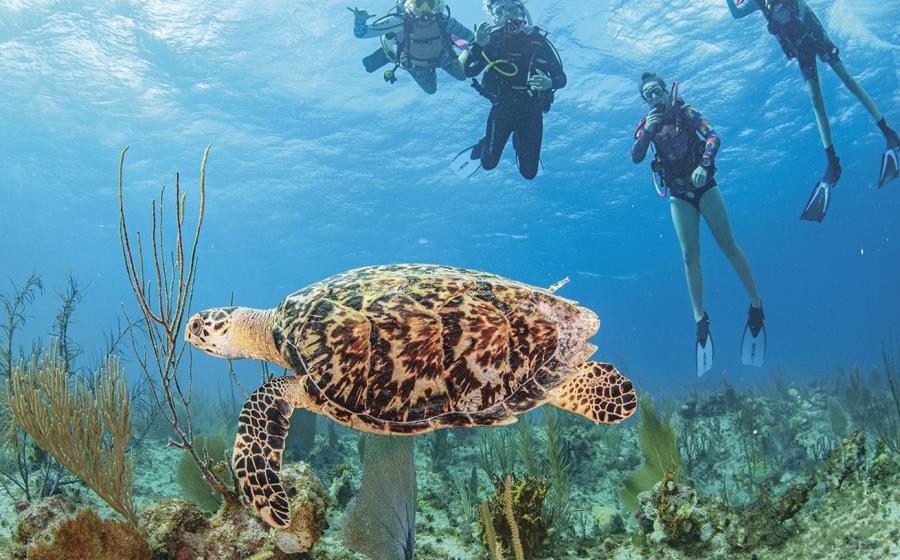Online Aquarium: Belize
**

**
Bluestriped Grunts
This fish has a golden yellow body with horizontal stripes of electric blue hues. The tail is dark gray or black. This grunt inhabits the shallows (5 to 25 feet deep), either swimming over the top of a coral reef or nestled under an elkhorn coral, small ledge or sea fan. It tends to swim in schools of 10 to 30 fish.

Black Grouper
You can distinguish this grouper by the large rectangular blotches on its upper body. As with other members of the grouper family, this fish has large lips, expressive eyes and a squared off tail. Groupers maintain a pecking order, with the largest dominating the reef area.

Southern Stingray
This is a pancake-shaped fish with a long whip-like tail. Both eyes are located on the upper side of the body, and the mouth is on the underside. The color can range from light to dark gray on the upper body and white underneath. Basically a bottom feeder, the stingray can be found on sand flats or in shallow eelgrass.

Horse-Eye Jacks
This fish is easy to recognize because of its silver body, very large eye and yellow forked tail.
It general swims in schools of 15 to 50 fish. It is generally a blue water fish that prefers swimming along the drop-off, or above a shipwreck. Horse-eye jacks can be curious and sometime encircle a diver in mid-water.

Atlantic Manta Ray
A member of the ray family, this fish is a giant, measuring 6 to 12 feet from wingtip to wingtip.
The manta is easy to identify because of its mammoth size and two flippers positioned forward of its eyes. The fish uses the flippers to gather plankton when feeding. The manta is usually colored gray or black on the topside of the body and white on the underside. This is a pelagic fish that tends to swim in blue water, off the drop-off, but it will occasionally come into the shallows to feed.

Blue Parrotfish
There are many different parrotfish on the coral reef, but it is easy to recognize this one. The fish is entirely blue from nose to tail. It has a blunt head and parrot-like beak that it uses for scraping living coral polyps from hard corals. If you closely examine corals on the reef, you are likely to discover scrape marks or cuts - evidence of parrotfish grazing. The parrotfish has a thick body, large scales and a squared-off tail.

Caribbean Reef Shark
The Caribbean Reef Shark is a common resident of the Wes










